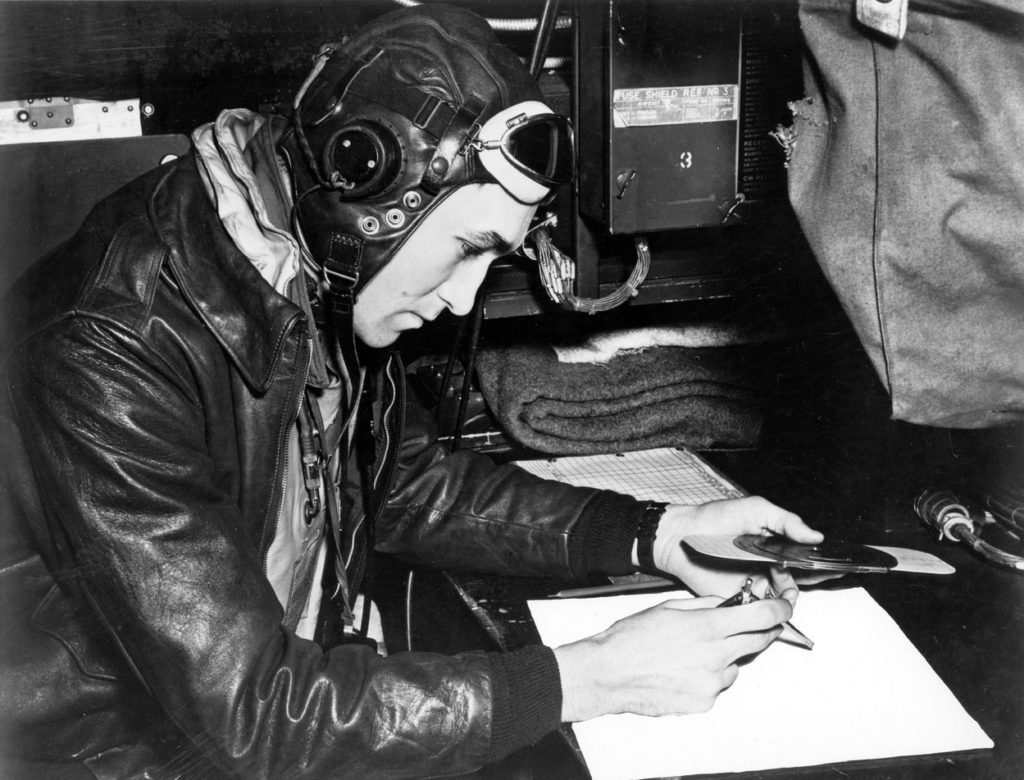
1LT Edwin M. Carmichael, navigator on Invasion II (42-5070, 91BG). Invasion II was intended to be the subject of a Hollywood film until being lost on 17 April 1943. The film was made with another aircraft, Memphis Belle (41-24485, 91BG), taking its place.
When the Boeing B-17 was first unveiled in 1935, Richard Williams of the Seattle Times described it as a “15-ton flying fortress.” The name stuck to the B-17 even though the aircraft failed to live up to it for many years. While the B-17 was designed as a strategic bomber, the Army Air Corps justified its use throughout the 1930s in terms of coastal patrol. And it was for this reason that the B-17 was not equipped with a powered gun turret until after the outbreak of war in Europe.
The redesigned B-17s, beginning with the E series in 1941, were bristling with Browning AN-M2 .50 caliber machine guns. The E and F series both carried a standard complement of nine MGs, with four in powered turrets above and below, and the others attached to flexible mounts in the waist, tail, and radio compartment.
Unfortunately, there was one major omission – a forward-facing gun.
Tests conducted at Wright Field (now Wright-Patterson AFB) were conducted throughout late-1939/early-1940 using a Curtiss P-36 in mock attacks against a Martin B-10. These tests concluded that the window of time to identify a bomber and successfully carry out an attack was too small at the high speeds of a head-on pass.
It took little time for the Luftwaffe to exploit this weakness.
Starting on 23 November 1943 – mere months after the start of the US offensive – German interceptors began using head-on passes against US bombers. Developed by Hauptmann Egon Mayer and Oberleutnant Georg-Peter Eder of Jagdgeschwader 2, the tactic involved approaching the bombers head-on, slightly above, and at a slight angle. While this gave the Germans only a few seconds to attack, Luftwaffe fighters were able to compensate using increasingly larger weapons like 20 mm and 30 mm autocannon. Even before the onset of the bombing offensive, concerned airmen experimented with mounting guns in the sides of their aircrafts’ noses (so-called “cheek guns”). The problem was that these mounts had very limited fields of fire, and the realization that the Luftwaffe had learned to exploit this weakness resulted in a variety of modifications wherein the plexiglass noses of B-17s and B-24s were altered to carry an extra one to three .50 calibers. As such, the standard B-17F in the field actually carried between 12 and 13 .50 caliber machine guns.

Brand new B-17Fs lined up outside of Boeing’s Seattle factory.
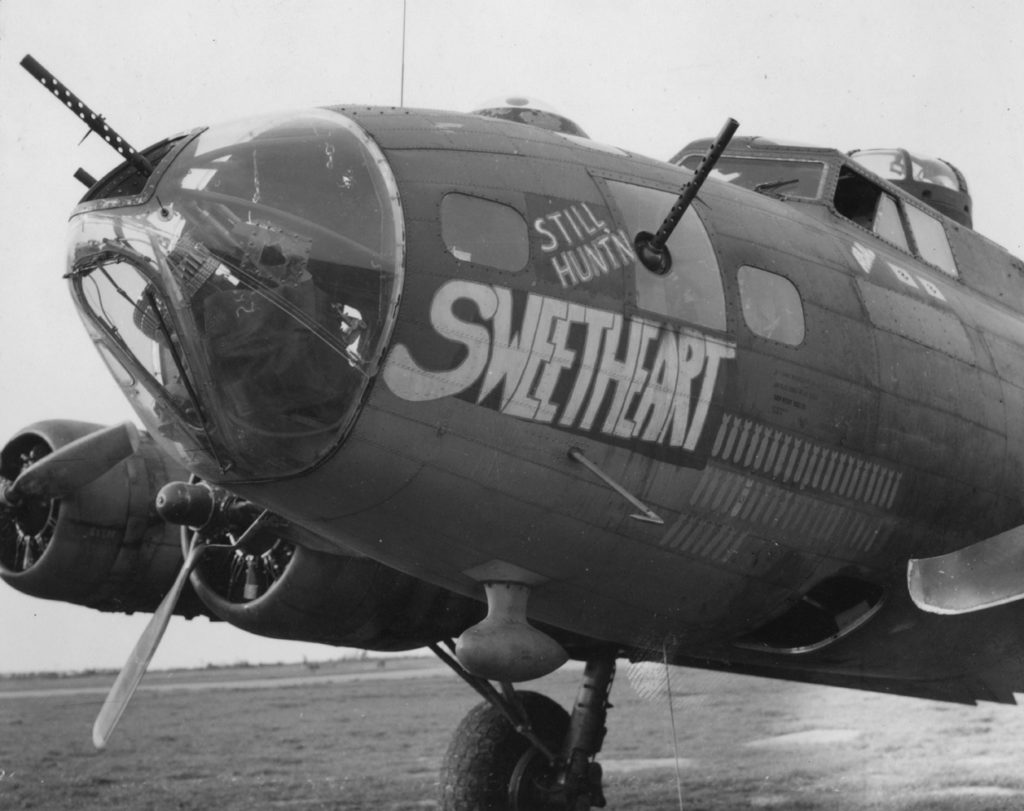
Sweetheart (42-3262, 388BG) while stationed at RAF Knettishall. Note the various modifications to the nose section.
These modifications were a unique characteristic of the B-17F series. With such a plethora of field mods needed all over the world, few B-17Fs were finished alike.
With massive .50 caliber cheek guns perched by the navigator’s shoulders, most B-17Fs had their factory-installed navigator tables replaced with new ones that sat lower to the floor. Few photos exist which clearly show these modification tables, but we were fortunate to not only have photos loaned to us by the National Museum of the US Air Force, but also blueprints from the modification center in Cheyenne, Wyoming dated 24 July 1942. Located by B-17 expert Karl Hauffe, these blueprints lacked dimensions or much detail, however they showed exactly where the table was to be mounted. Using this information, we printed a template to scale and used it to make a pattern. We used the factory table’s blueprints to fill-in the missing information. As such, the table was cut from 5-ply 3/8 yellow poplar and painted to match Berry Brother’s Bronze Green No. 234G9.
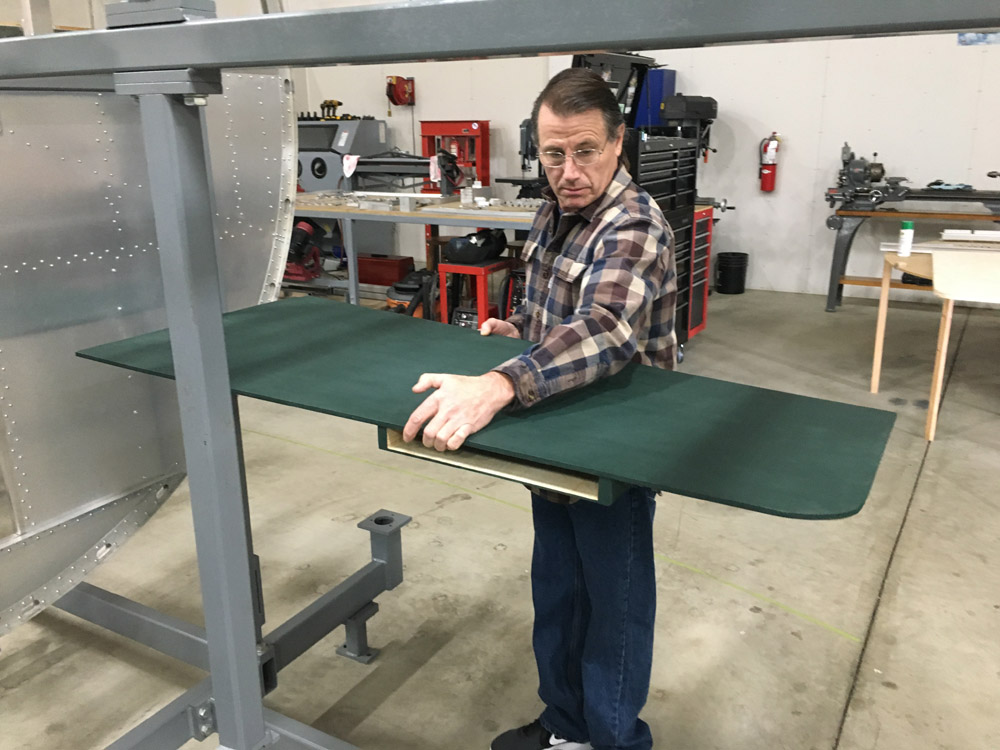
Ray holds navigator’s table 3M-228 against Bulkhead 3, were it will be later mounted.
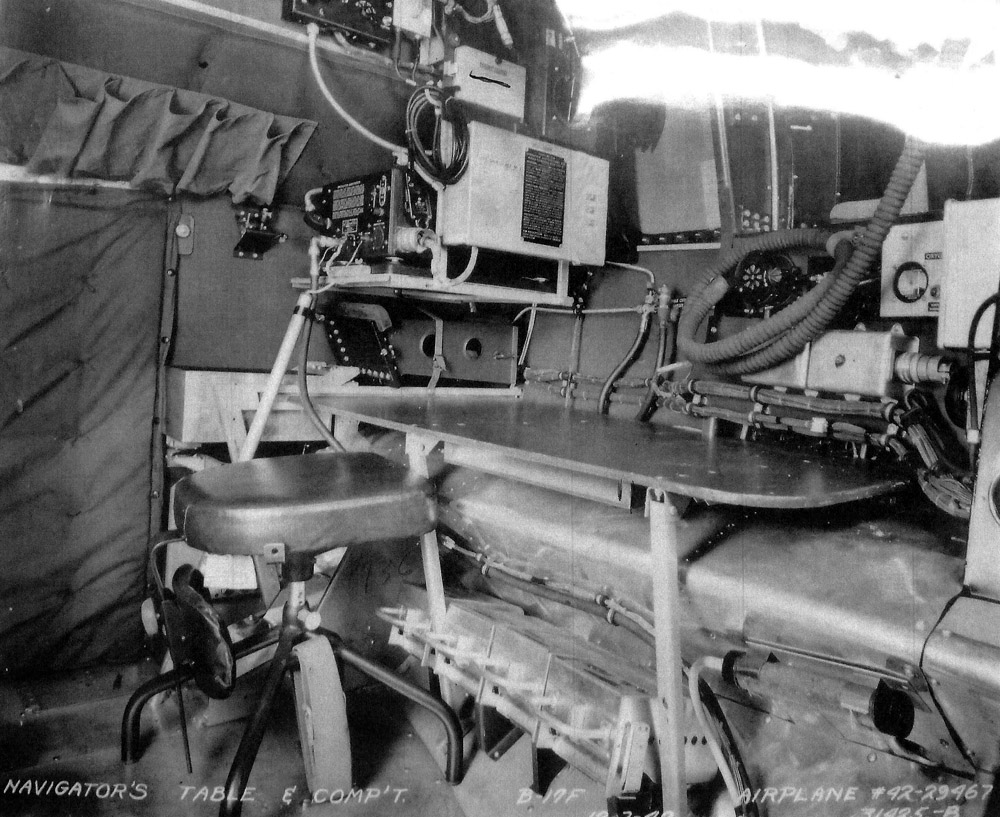
The modification navigator’s table aboard Flak Dodger (42-29467, 99BG), circa mid-1943.
The addition of cheek guns to US heavy bombers was standardized by the end of 1942, but it was not until the spring of 1943 that a standardized nose gun entered service (there were still plenty of non-standard variants). Believed to have originated from the 305th Bombardment Group, the standardized forward-facing gun mounted a single .50 caliber MG in a triangular box-mount. The outer layer of wall upholstery was removed forward of Station 2 (roughly the middle of the nose) and brackets were bolted to the metal underneath to brace the box, which sat in a hole cut in the Plexiglas. These mounts were characteristic of late-B-17Fs, and blueprints from the Cheyenne modification center involving such mounts generally date to late-February/early-March 1943.
We at Hangar Thirteen are exceptionally fortunate to have come into contact with Colin Waterworth of Great Britain. A respected collector of vintage military equipment, Colin managed to locate one of these rare gun mounts and was kind enough to loan it to us.
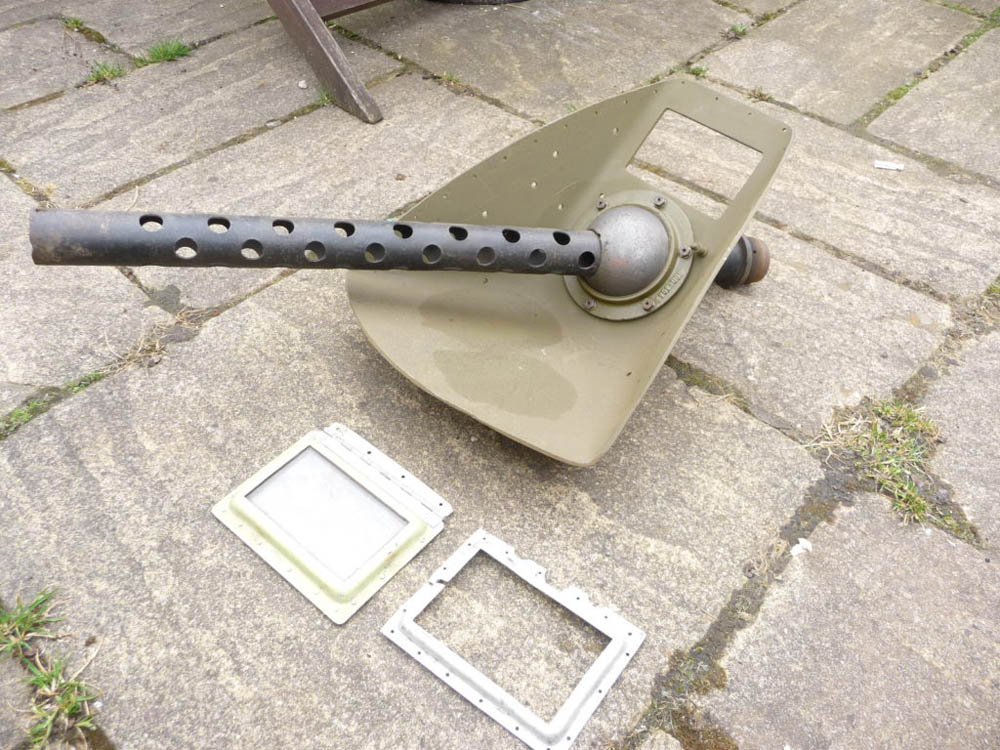
The M-1455 Nose Gun Mount loaned to Hangar Thirteen by Colin Waterworth.
